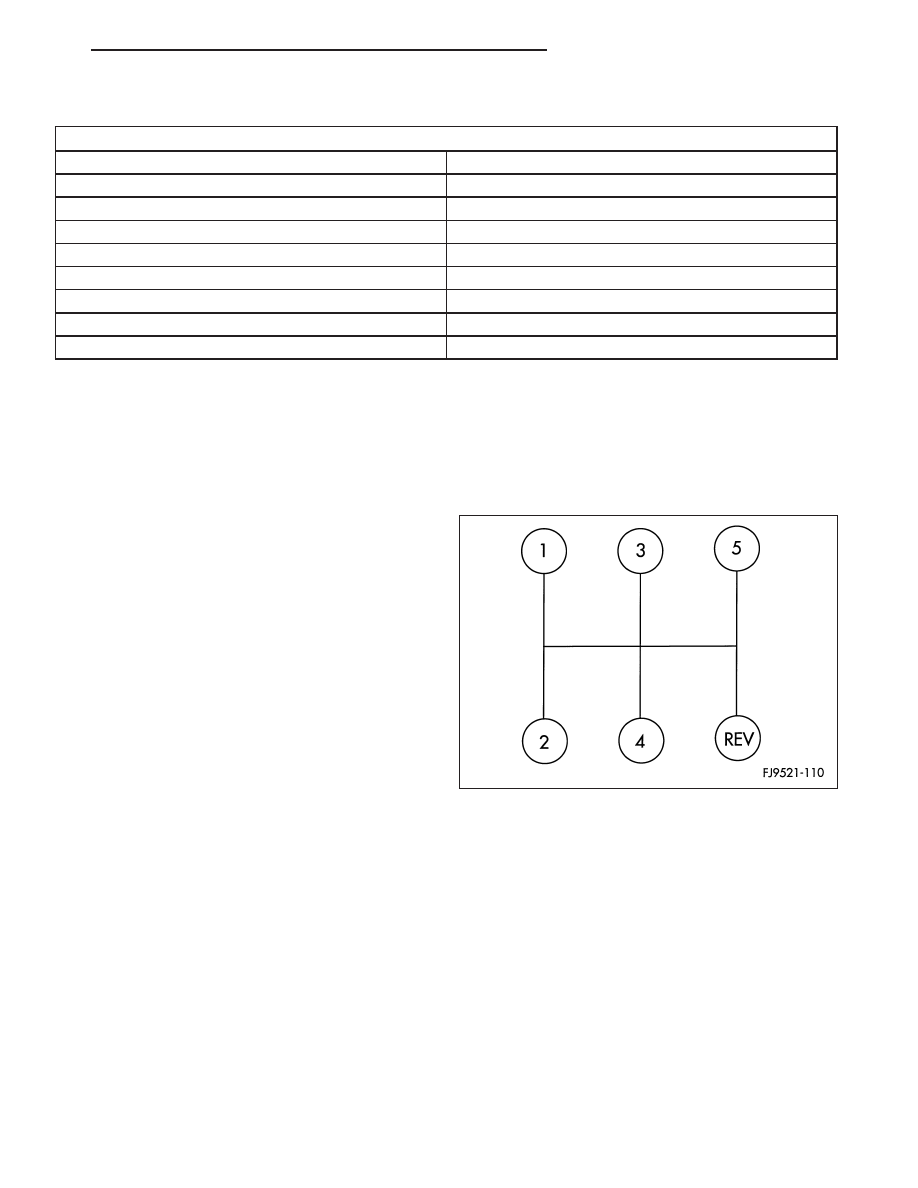Content .. 1185 1186 1187 1188 ..
Dodge Caliber. Manual - part 1187

GEAR RATIOS
GEAR
1st
3.77
2nd
2.16
3rd
1.41
4th
1.026
5th
0.81
REVERSE
3.4
FINAL DRIVE RATIO
4.12
REVERSE BRAKE
YES
CLUTCH RELEASE SYSTEM
HYDRAULIC
CAUTION: All gears and shafts must not be interchanged with other transaxles; they will not function cor-
rectly.
The differential is a conventional arrangement of gears that is supported by tapered roller bearings. The final output
gear turns the ring gear and differential assembly, thereby turning the drive axle shafts.
GEARSHIFT PATTERN
The T355 transaxle shift pattern is a modified H–pat-
tern. Overdrive fifth and reverse gears are in-line and
outboard of the first through fourth gear positions.
DIAGNOSIS AND TESTING
COMMON PROBLEM CAUSES
The majority of transaxle malfunctions are a result of:
•
Insufficient lubrication
•
Incorrect lubricant
•
Mis-assembled or damaged internal components
•
Improper operation
HARD SHIFTING
Hard shifting may be caused by a mis-adjusted crossover cable. If hard shifting is accompanied by gear clash,
synchronizer clutch and stop rings or gear teeth may be worn or damaged.
Mis-assembled synchronizer components also cause shifting problems. Incorrectly installed synchronizer sleeves,
struts, or springs can cause shift problems.
Worn, damaged, mis-assembled or leaking hydraulic clutch release system/components can also cause difficult
shifting or gear clash.
PM
T355 MANUAL TRANSAXLE
21 - 47